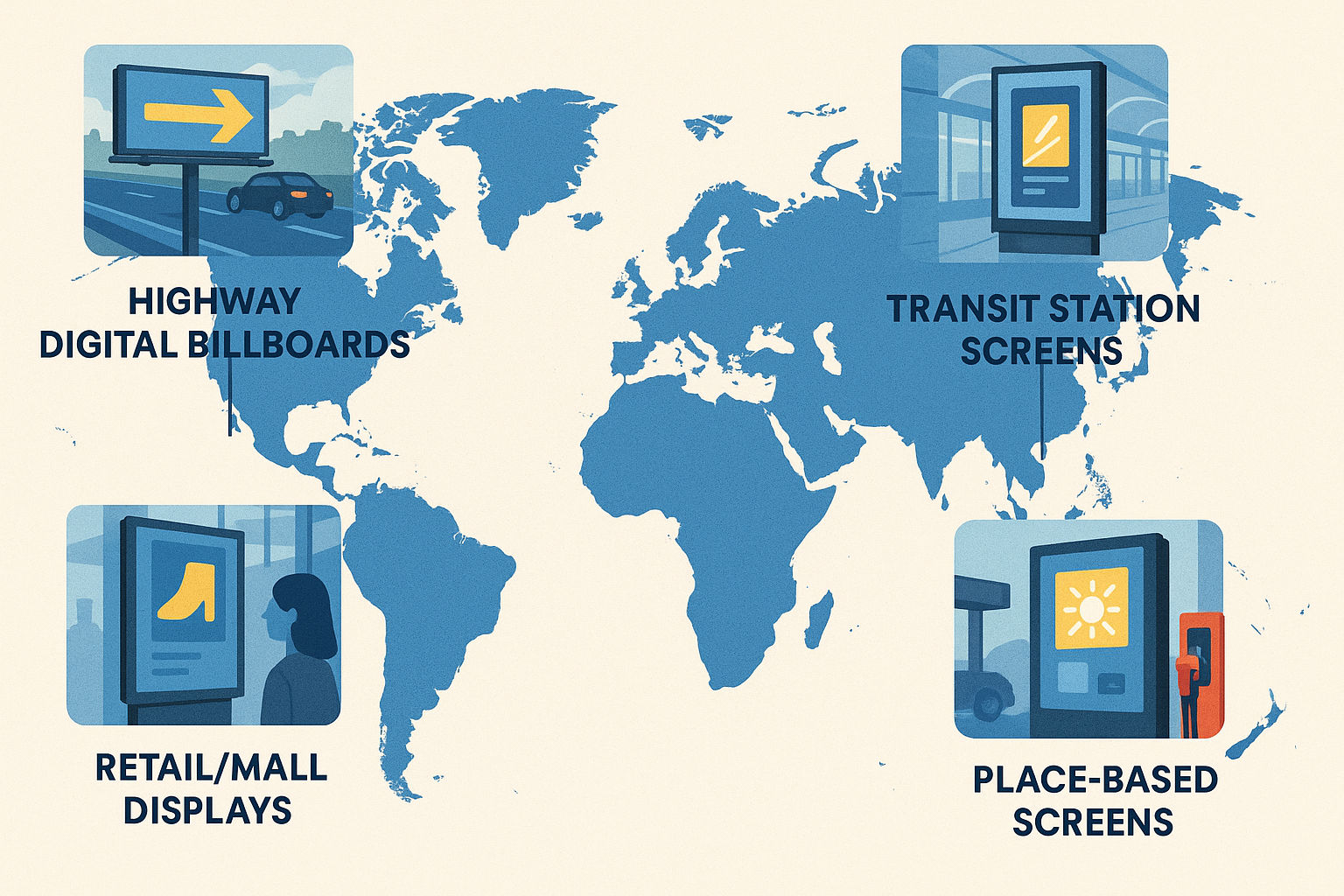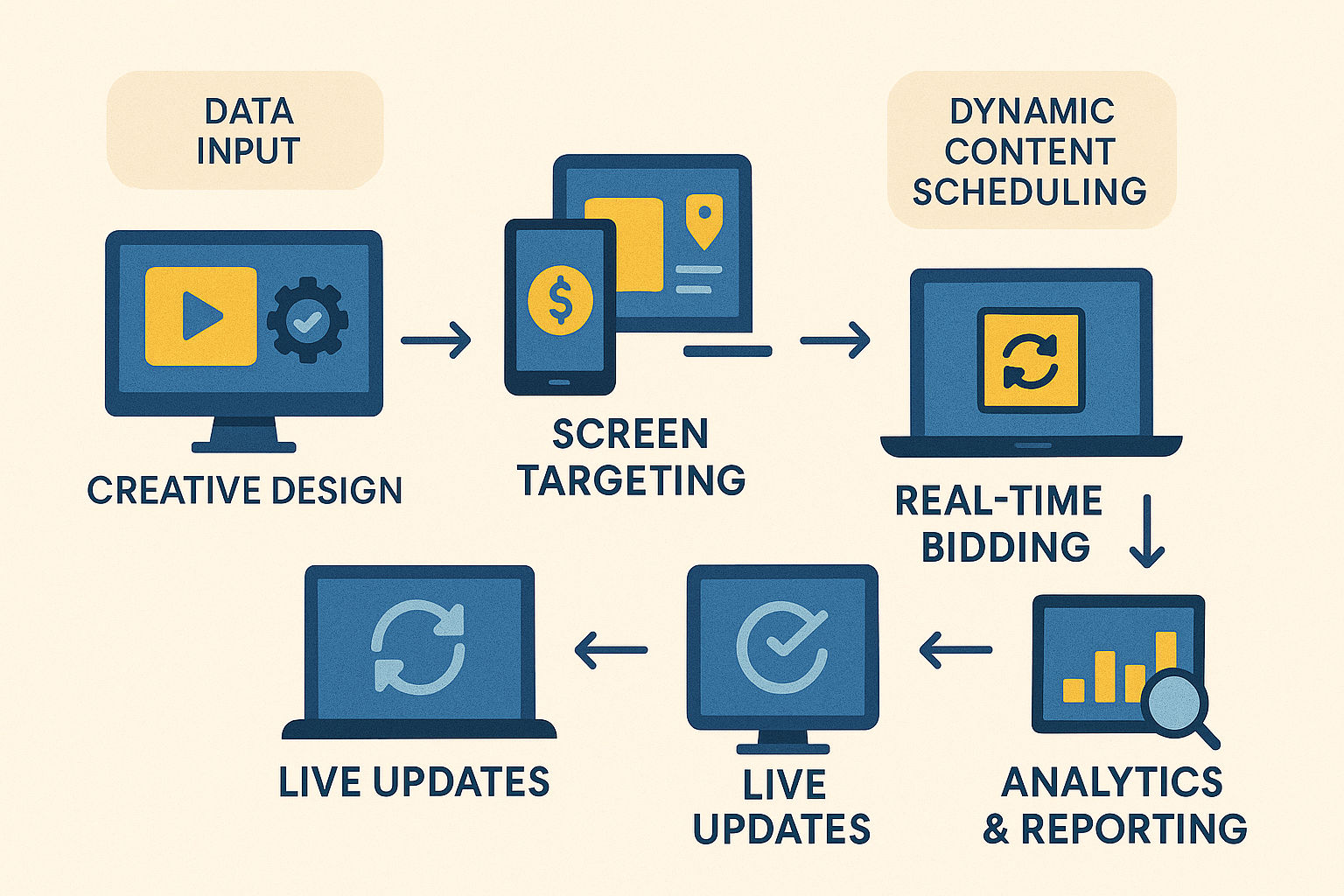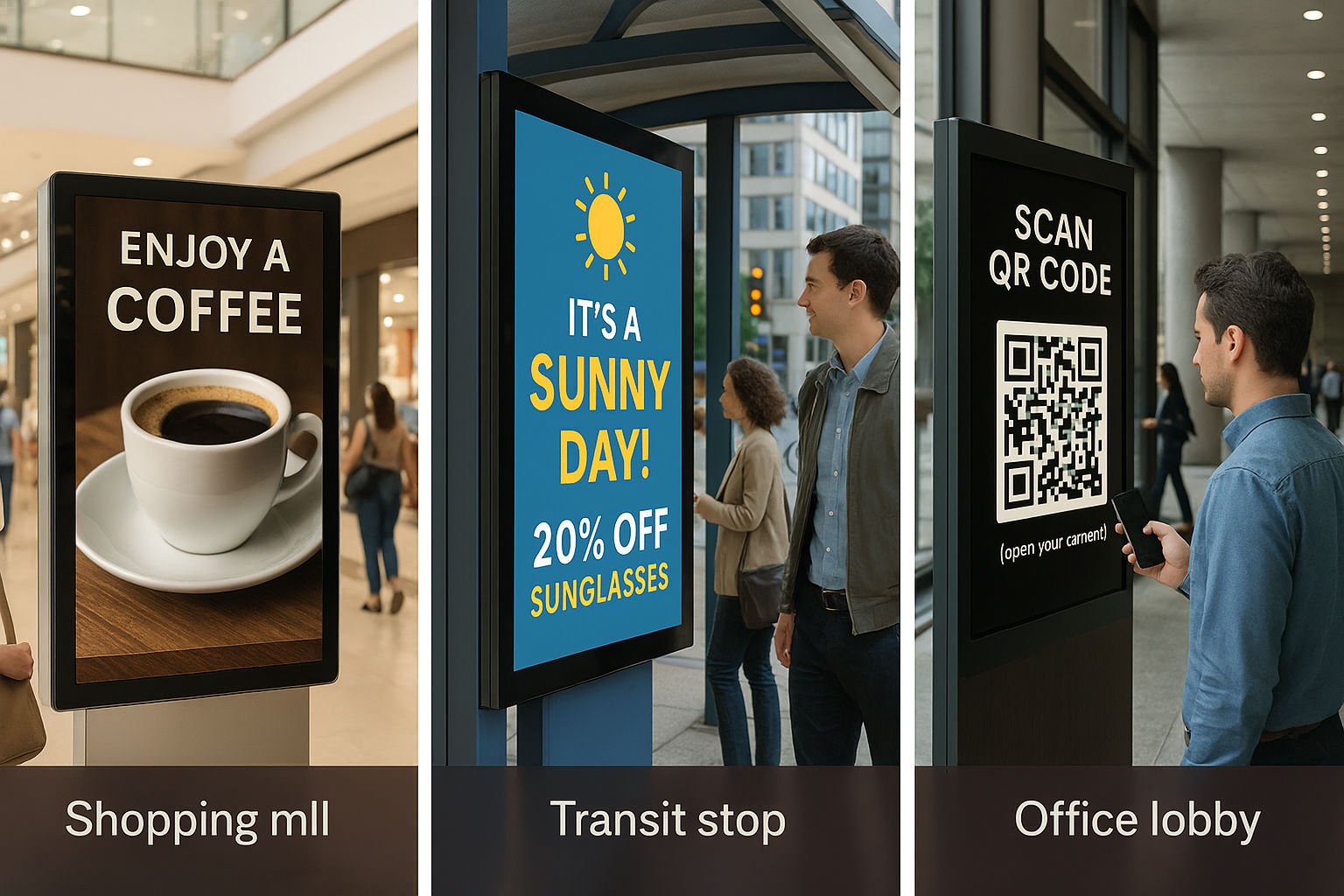· Rudraveer · 4 min read
The Media Buyer’s Guide to Digital Advertising Screens

Introduction
Digital Out-of-Home (DOOH) advertising brings online agility and data to the billboard world. Digital advertising screens are electronic LED/LCD displays placed in public venues (roadsides, transit hubs, malls, offices, etc.) that show video or animated ads on a schedule. Unlike static posters that require printing and installation, DOOH boards can update content in seconds – for example, switching a morning coffee promo to an afternoon lunch offer with a few clicks. They also support rich media (video, animation or interactive elements), which tend to grab more attention and drive higher recall than static ads. In short, digital screens combine the visibility of outdoor placements with real-time targeting and measurement.
Key Advantages of Digital Signage over Static OOH
Instant, Contextual Updates
Update promotions or messaging on the fly, targeting by time of day, weather, or event. Real-time updates let you test offers quickly and keep content fresh.
Higher Engagement and Recall
Motion and interactive content captivate audiences far more than still images. A recent study shows that out-of-home ads produce the highest consumer recall among major ad formats.
Lower Long-Term Costs and Scalability
Though they require higher upfront investment, digital screens eliminate recurring print and install costs. They also allow shared ad rotation for higher ROI.
Types of Digital Advertising Screens
Large-Format Digital Billboards
Ideal for high-traffic locations like highways or urban centers. Great for brand awareness with bold, time-limited visuals.
Transit & Street-Furniture Screens
Located in airports, subways, or bus stops. These reach commuters and allow precise scheduling during rush hours.
Retail and Mall Displays
Placed at or near point-of-sale. Influence purchase decisions with interactive, context-aware promotions.
Corporate & Event Screens
Indoor screens used in offices, lobbies, or conferences. Excellent for B2B messaging and sponsorship visibility.
Place-Based Screens
Found in niche locations like gyms, gas stations, or clinics. These meet consumers in-context and often feature high engagement through QR codes or interactive offers.
Optimizing DOOH Campaigns with Data & Programmatic Tools
Programmatic Slotting
Use DSPs to target screens by time, audience, and location. Bid for ad slots and optimize based on performance.
AI-Driven Scheduling
Systems analyze footfall, weather, and past performance to automate best ad placements and timing.
Continuous Optimization
Swap creative assets on the fly, avoiding long delays. Spend client budgets more efficiently through ongoing iteration.

Best Practices for High-Impact Screen Campaigns
- Clear, Concise Creatives: Bold visuals, limited text, strong call-to-action.
- Target by Timing & Demographics: Use data to inform screen location, audience group, and ad timing.
- Enable Measurable Outcomes: QR codes, URLs, and footfall metrics allow you to connect screen views with real-world results.
How Flickerwall Empowers Media Agencies
Remote Multi-Screen Control
Manage all screens from a single cloud dashboard. Push updates instantly with 99.9% uptime reliability.
Flexible Grouping & Scheduling
Organize screens by campaign or region. Use dayparting and repeat rules for highly targeted delivery.
Rich Creative Support
Support for video, image, HTML widgets, live data feeds, and templates — all editable in real time.
Analytics & Integrations
Connect Google Sheets, CRMs, or analytics platforms via API. Measure playback logs, QR scans, and content health.
Enterprise-Grade Security
With AES-256 encryption and user-role controls, Flickerwall ensures security across all campaigns and clients.
Use Case: 100-Screen Mall-to-Lobby Campaign
Scenario: A media agency deploys 100 Flickerwall-powered screens across malls, transit hubs, and corporate buildings to promote a new coffee brand.
Execution:
- Group screens by audience (shoppers, commuters, professionals)
- Schedule looped content for breakfast and afternoon time slots
- Real-time swap triggered by a weather event (“Hot Latte on a Cold Day”)
- Track engagement with QR codes and UTM links
Results:
- 200 QR scans, 12% increase in-store visits
- Strong brand recall and measurable ROI
- Campaign completed quickly and cost-efficiently with Flickerwall

Take the Next Step with Flickerwall
Flickerwall is a fully cloud-based DOOH platform and CMS built for agencies. Launch, scale, and measure DOOH campaigns from a single dashboard. Ready to amplify your next OOH campaign?
👉 Start Your Free Trial Now
No credit card required. Instant access. Risk-free.

